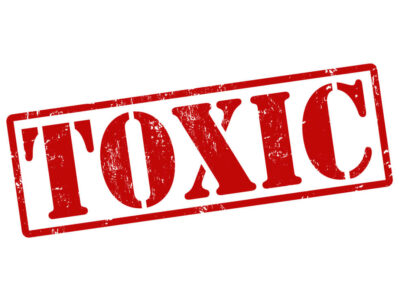Movies and TV shows often feature numerous depictions of perilous situations. Unfortunately, the dangers on TV and movie sets are not just limited to the pretend variety. Safety risks that are all too real can arise in such workplaces, sometimes leading to workers getting seriously hurt.
These incidents can include accidents involving stunt coordination, falling set equipment, electrical hazards, lighting rig collapses, and vehicle collisions during high-speed shoots. These injuries may affect camera operators, lighting technicians, grips, production assistants, actors, and stunt performers, each of whom plays a vital behind-the-scenes role in film and television production.
Set locations vary significantly, and with them, so do risks. Filming in rugged outdoor environments can lead to slip-and-fall injuries, while sound stages often have tightly packed rigging, cables, and lighting equipment that pose electrical or trip hazards. Inadequate fall protection on scaffolded stages, malfunctioning dolly track systems, or improperly secured overhead gear can lead to devastating consequences. When safety becomes secondary to scheduling and budgets, the risks multiply.
Workplace Accidents on Set: A Growing Trend
Unfortunately, significant workplace injuries on TV and movie sets have become increasingly common in recent times. Between 2014 and 2015, reports of serious accidents on TV/film sets to the Occupational Safety and Health Administration (OSHA) increased nearly twofold. And this only includes reported incidents; on-set accidents sometimes go unreported, according to industry experts and union whistleblowers.
While many productions adhere to union-mandated safety guidelines, others, particularly low-budget or non-union projects, may skip crucial safety briefings or use underqualified personnel for complex stunts and setups. Notable incidents such as the Midnight Rider train accident in 2014, which killed a crew member during an unauthorized shoot, or the tragic Rust shooting involving a live firearm, highlight the ongoing systemic gaps in set safety culture.
What’s Behind the Rise in On-Set Injuries?
Why are serious on-set accidents trending up? Some industry insiders speculate that new financial pressures in the film and TV industries may be negatively affecting the safety situation at sets. Cost-cutting measures, shrinking production timelines, and prioritizing profit over people may result in crews working longer hours, skipping safety briefings, or being pressured to use faulty or rushed equipment setups.
In independent film productions and smaller commercial shoots, the lack of dedicated safety officers and qualified stunt coordinators can lead to preventable incidents. Equipment may be rented from third parties with minimal inspection, and safety harnesses, guardrails, or electrical isolation protocols may be viewed as production delays rather than essential safeguards.
Are these kinds of pressures leaving some film and TV companies tempted to skimp on safety on sets? Industry insiders suggest that corners are often cut in “guerrilla-style” filmmaking or last-minute reshoots where production permits may not even be secured.
Legal Responsibilities and Industry Regulations
One wonders how the TV/film industry will respond to the increase in major accidents on sets. Cal/OSHA regulations, along with guidelines established by entertainment unions such as SAG-AFTRA and IATSE, mandate that studios and production companies provide a safe working environment.
These standards mandate:
- Safe rigging for overhead equipment and lighting
- Designated rest breaks and meal periods
- Certified stunt coordination and firearm handling
- Fire and emergency response plans on set
- Adequate staffing to avoid fatigue-induced errors
The failure to meet these obligations can expose producers and employers to both workers’ compensation claims and civil liability, especially if gross negligence can be proven. For example, if a director knowingly skips safety meetings to expedite production and someone gets injured, this could trigger punitive damages outside the workers’ compensation system.
The Cost of Unsafe Workplaces in Entertainment
All companies, regardless of their industry and the financial conditions within it, should ensure that their workers operate in a safe environment. When a workplace, such as a TV/film set, is unsafe, the repercussions on workers’ lives can be significant.
An unsafe set can lead to:
- Traumatic brain injuries from falls or camera rig collapses
- Electrical burns or electrocution from exposed wiring
- Spinal injuries caused by stunts, heavy lifting, or stage collapses
- Chemical inhalation from pyrotechnics or fog machines
- Psychological trauma from witnessing fatal accidents or experiencing severe injury
Many of these injuries result in long-term impairment ratings, permanent partial disabilities, or even post-traumatic stress disorder (PTSD). Recovery may involve surgery, physical rehabilitation, therapy, and long-term wage loss — all of which must be accounted for in a fair workers’ compensation settlement.
Challenges Faced by Injured Crew Members Seeking Compensation
In addition to the life challenges posed by their injuries, workers injured on a TV/film set or at a different type of workplace may face challenges in their efforts to obtain the workers’ compensation benefits they deserve. Examples of roadblocks that injured workers may face in obtaining fair compensation include unfair claim denials or underpayment of claims.
Some crew members may be misclassified as independent contractors, particularly in non-union shoots, which can complicate eligibility for workers’ compensation. Even legitimate claims may be delayed due to employer pushback or slow medical evaluations. Others may be pressured to return to work before reaching Maximum Medical Improvement (MMI), leading to reinjury or chronic conditions.
Additionally, access to Qualified Medical Examiners (QMEs), panel QME selection, and administrative hearings may be necessary when disputes arise over treatment plans or impairment percentages.
In severe cases, injured crew members may also have the option to file civil lawsuits against third-party vendors (equipment suppliers, stunt contractors) or production companies that failed to provide a safe working environment.
Legal Help for Film and TV Workers in California
Skilled workers’ comp attorneys understand the difficulties and complications that can come up in workers’ comp cases and can assist injured workers with responding to such challenges.
At Hussain & Gutierrez, we help injured crew members, technicians, performers, and set workers fight for the full compensation they are legally entitled to including medical costs, lost wages, future care needs, and permanent disability compensation. Whether you’re part of a union production or working freelance on a digital or commercial shoot, our legal team knows how to protect your rights under California labor law.
We also assist with claim appeals, denied benefits, and legal investigations into unsafe production environments.
Frequently Asked Questions (FAQs)
What types of injuries are common on TV and movie sets?
Common injuries include falls from scaffolding, electrical burns, stunt mishaps, falling lights or props, toxic inhalation from smoke machines, fatigue-induced mistakes, and psychological trauma following traumatic on-set events.
Can a freelance crew member file a workers’ comp claim in California?
Yes depending on how your work was structured. Even if you were labeled as a freelancer or independent contractor, California’s employment tests may still classify you as an employee eligible for benefits.
What if I were injured on a non-union set with no safety protocols in place?
You may still be protected under California’s Occupational Safety and Health Administration (Cal/OSHA) regulations and labor law. If negligence or willful safety violations occurred, you may be eligible for both workers’ compensation and a separate civil lawsuit.
Are production companies required to follow OSHA rules?
Yes. Regardless of the size of the production, if you are working in California, your employer must follow state occupational safety guidelines under Cal/OSHA.
What should I do if my claim was denied or underpaid?
Contact an attorney immediately. You have the right to request a Qualified Medical Examiner, file an appeal with the Workers’ Compensation Appeals Board, and pursue unpaid benefits with legal support.
If you’ve been injured while working on a film set, television production, commercial shoot, or live broadcast, don’t wait. You may be entitled to workers’ compensation even if your claim was denied or you were working as a freelance crew member.
Our firm understands the physical, emotional, and legal complexities of work in the entertainment industry, as well as how production demands can often compromise safety. From the first consultation to final settlement, we help you navigate California’s complex workers’ compensation system with confidence.
Schedule your consultation now at Hussain & Gutierrez.
Your recovery deserves professional protection.



